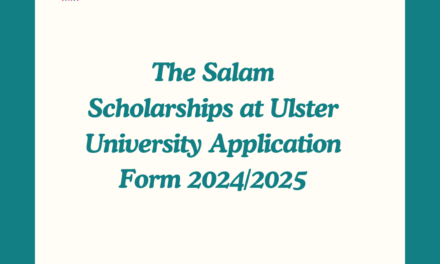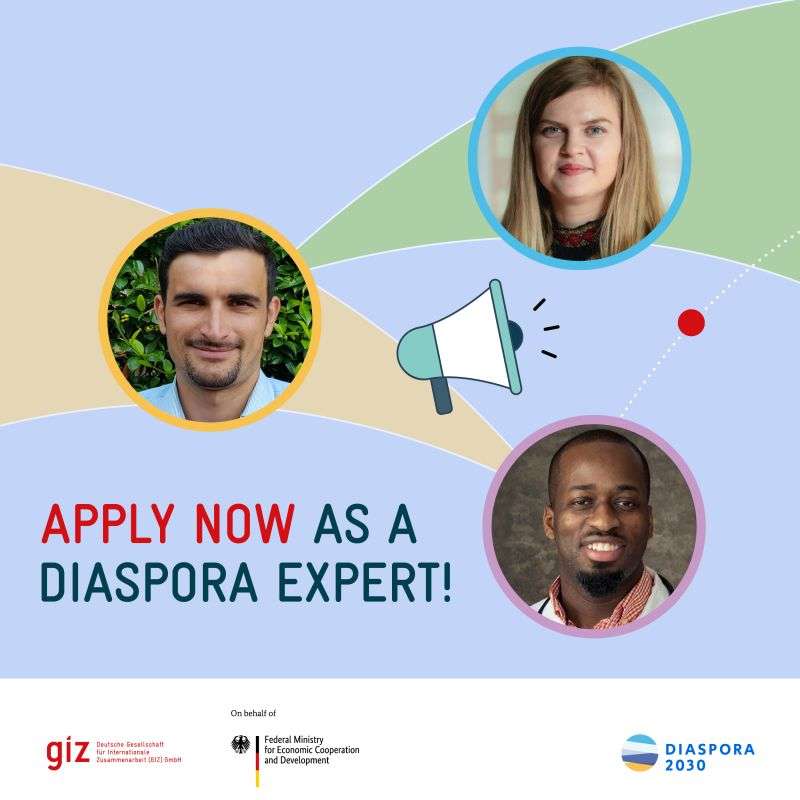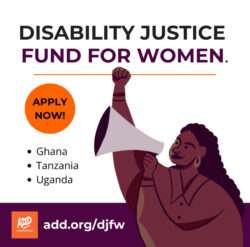Australian visa changes 2022: The opportunities for young people to live and work in Australia
As Australia seeks to ramp up migration as part of its economic recovery from the COVID-19 pandemic, here is a round-up of some of the major immigration changes that have been announced.

Artwork of man with suitcase and immigration stamp Source: SBS News
Migration to Australia has fallen starkly since the beginning of the COVID-19 pandemic due to widespread travel bans and border closures, but it is expected to bounce back in 2022.
That’s according to the Treasury’s mid-year economic update, released earlier this month, which shows while net overseas migration was forecast to be around minus 41,000 people in 2021-22, it is expected to climb to 180,000 people in 2022-23 (almost double the previous estimate).
Australia’s migration program is set annually and runs from 1 July to 30 June each financial year. The 2024-25 forecast remains at 235,000 people.
Which visa holders can currently enter Australia?
Australia’s borders reopened to eligible international students and certain skilled visa holders on 15 December 2021 – almost six months earlier than forecast in the federal budget.
Australian citizens and permanent residents can also enter Australia, and their immediate family members can apply for an exemption to enter.
More opportunities for temporary visa holders
Ben Watt, a migration lawyer for Visa Envoy, said while many temporary visa holders left Australia during the pandemic due to a lack of work and welfare support, he now expects the focus will be on offering permanent residency pathways to those who remained, with some of those pathways already announced.
The 2021-22 planning level was maintained at 160,000 places and carried over the composition from the previous year, meaning there were 79,600 places for the Skill stream, 77,300 for Family, 100 for Special Eligibility and 3,000 for children.
“To me, [the Department of Home Affairs] seems to want to fill that 160,000 with quite a few people who are here on those temporary visas. They’re trying to draw those permanent migrants from people who are in Australia,” he said.
“That’s the big change; they are loosening up and offering a lot of different pathways, and a lot of extensions, for people who are already here to achieve their migration dream.”
“The government has already introduced a number of visa changes throughout the pandemic and will continue to review visa settings to support Australia’s economic recovery,” a spokesperson for the Department of Home Affairs said.
Permanent residency for skilled migrants in health and hospitality
In November, the government announced significant visa changes to retain highly skilled migrants in critical sectors as part of its economic recovery. Under the changes, certain migrants who have chosen to stay and work in Australia during the pandemic will be eligible for permanent residency.
The changes may benefit existing Temporary Skill Shortage (subclass 482) visa holders in the short-term stream, who were previously restricted to a two-year stay without such a pathway. Visa holders of the now-discontinued Temporary Work Skilled (subclass 457), who no longer meet the age requirement, may also benefit.
“This is a special concession recognising those highly skilled migrant workers who chose to stay in Australia throughout the pandemic, while continuing to address Australia’s acute shortages. This allows them to stay here, with a pathway to Australian citizenship,” Immigration Minister Alex Hawke said at the time.
Mr Hawke said there were about 20,000 visa holders who may benefit from the changes, with the largest cohorts employed in the health and hospitality industries. READ MORECould Australia see a migration boom after the COVID-19 pandemic?
Mr Watt said the changes will make a huge difference for those who have been living and working in the major cities in certain hospitality jobs and struggled to progress to permanent residency.
“For as long as I have worked in the field, I’ve always had a large number of cooks and restaurant managers who come in, work for a restaurant or businesses in Sydney, Brisbane and Melbourne and have an ability to really contribute.”
“It’s difficult to find workers in this field. So it has been a bitter pill for these people to swallow when they are desperately needed and then there has been no pathway for them to get permanent residency.”
“It stops the cruelty of that situation and also provides a great incentive for more people to pursue that pathway.”
The department spokesperson said the changes announced on 25 November 2021 will be implemented progressively from December 2021 through to 1 July 2022.
Permanent residency for skilled migrants in the regions
Migration agent Ruby Fowdar, who is managing director of the Australian Immigration Agency, said temporary migrants who were stranded offshore due to the pandemic have been the hardest hit. But visa holders in Australia are in a “good position”.
Among the new permanent residency pathways she highlighted was the skilled regional subclass 191 visa for people who have lived, worked and studied in a designated regional area on a previous, eligible visa.
“It’s a pathway; you have to be on a 494 visa for three years and then apply for the 191,” she said.
The visa does not start until 16 November 2022, according to the department.
Permanent residency for Hong Kong nationals
There is also good news for some Hong Kong nationals who are based in Australia, as they will be offered access to new specialised pathways to permanent residency from March 2022.
The government said in November the introduction of two new visa streams – subclass 189 (Hong Kong Skilled Independent Stream) and subclass 191 (Hong Kong Regional Stream) – was introduced as part of Australia’s commitment to strengthening ties with Hong Kong. READ MOREHong Kong nationals in Australia to get new specialised pathways to permanent residency
“These new visas will provide a pathway for temporary graduates and temporary skilled workers from Hong Kong currently in Australia on extended visas and will build on the already close family connections and economic ties with Hong Kong that have existed for many years,” Mr Hawke said.
It is estimated about 8,800 existing temporary skilled, graduate and student visa holders would be eligible for two new visa streams that will open on 5 March 2022.
Change to 189 New Zealand Stream Subclass Visa
In 2021, the Australian Government also amended the New Zealand pathway to help eligible temporary visa holders who are New Zealand citizens to obtain permanent residency in Australia.
“If you’re a New Zealander in Australia and you make a certain amount of money, there’s capacity to get a 189 place, which is taken from a skill migrant overseas,” Mr Watt said.
From 1 July 2021, changes came into effect for the New Zealand stream of the Skilled Independent (Subclass 189) visa that reduced the number of years in which an eligible applicant must meet the specified income threshold (from at least four to three of the last five income years).
The government has also implemented measures to help temporary visa holders who were on a pathway to permanent residency prior to COVID-19 to maintain their eligibility.
“As of 13 November 2021, New Zealand citizens applying for the New Zealand stream of the Skilled Independent (subclass 189) visa will be able to claim an exemption from meeting the income requirement for the 2020-21 income year,” the department spokesperson said.
“This will assist applicants whose 2020-21 income was adversely affected by the COVID-19 pandemic. Applicants can claim a COVID-19 income exemption from either the 2019-20 or 2020-21 income year but not both.”
‘Section 48 bar’ lifted for skilled migration visas
Skilled migrants in Australia are also temporarily being given the opportunity to apply onshore for three skilled migration visa subclasses following a change to section 48 of the Migration Act.
Section 48 bar applies to applicants who have had a visa refused or cancelled since their last entry into Australia.
On 13 November, Mr Hawke agreed to temporarily include the following visa subclasses in the list of exempted visas: 491, 494 and 190.
“You have enormous subsets of people in Australia who are on bridging visas waiting for a migration hearing, which can take five years,” Mr Watt said.READ MORE‘Devastated’: Temporary visa holders excluded from re-opening of international borders
“Those people are now being invited to make applications in Australia for permanent residence and provisional visas that will allow them to eventually apply for permanent residency.
“It’s a big opening and it’s going to a big pool of people who previously weren’t able to apply.
“That’s in place now but it’s going to be affecting things next year.”
The department spokesperson said the change only applies during the current COVID-19 emergency.
“The additional subclasses will be removed from the list of exempt visas once this period ends,” they said.
New visa settings for temporary graduate visa holders
Temporary graduate visa holders stranded offshore and unable to travel to Australia due to the pandemic will be also able to apply for a replacement visa – but there is a wait.
The government said in November the concession would allow current or former temporary graduate (subclass 485) visa holders whose visas expired on or after 1 February 2020 to re-apply for a new visa of the same duration from 1 July 2022. READ MORE14,000 skilled graduates will be stuck outside Australia for another year due to visa rules
The 485 visas are offered to recently graduated international students with skills in specific occupations aimed at allowing them to continue to work in Australia.
There will be other changes to temporary graduate visa settings, including an increase to the stay period on the 485 visa for Masters by Coursework graduates from two to three years, and from 18 to 24 months for the Graduate Work stream.
Mr Watt said the range of concessions already announced are complex but worth exploring “as they are trying to do a bit of justice for these people”.
“It’s a very humane concession, and it means a lot of talent that was here, we have a chance of getting them back.”
“There’s an enormous multiplication of different changes and scenarios, and who applies for what and who can get what. But it’s very likely if there is another border closure as well, this will be the first thing to go.”
The government said these changes would be implemented “progressively” from 1 December 2021 to 1 July 2022, with further details expected on the department’s website. Applications for the replacement visa can be made from 1 July 2022.
Ms Fowdar encouraged people to seek professional migration advice, with information constantly changing and more changes expected in the new year.
Official information about visas can be found at the Department of Home Affairs website.















